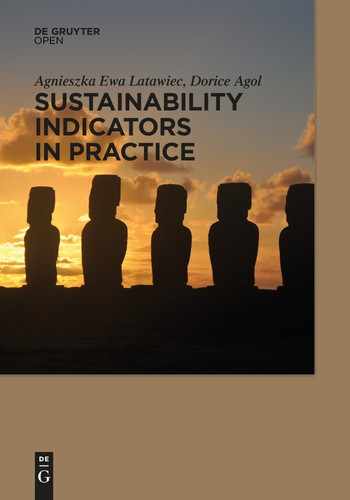Foreword
Indicators of sustainability are in vogue again, after a lull of a few years when a breakthrough in the drive for new and broader measures of progress inspired by Agenda 21 and the first Rio Conference appeared to elude science and the policy communities. This re-energized interest is driven in no small part by international politics that placed sustainable development goals (SDGs) at the center of the post-2015 development agenda. Taking SDGs and targets seriously requires tracking progress, and tracking progress requires sustainable development indicators (SDIs).
Even though the post-2000 years haven’t resulted in a spectacular breakthrough in how society measures progress, the idea that progress is multi-dimensional and that it requires a more holistic approach to measurement quietly and steadily took hold. From corporate sustainability reports to community wellbeing projects, the reporting on international agreements, or thematic ecosystem assessment, not to forget the cottage industry around developing an ever-growing assembly of integrated indices, the sum total of these initiatives resulted in an increasingly rich and diverse ‘indicator zoo’ (Pinter et al., 2005).
The cases presented in this volume stand as illustration that the practice of developing alternative indicator systems has spread to countries as far apart as Poland and Brazil and to sectors as diverse as cattle ranching, wastewater treatment and pronghorn conservation. Complementing well-established measures of progress apparently does not only make sense under a wide range of contexts, but despite perennial data challenges it is also feasible. While undeniable data problems remain, as pointed out by the UN Secretary General’s Independent Expert Advisory Group on the Data Revolution, among others, there is significant progress in the technologies of data acquisition, monitoring and sharing and in the ‘outsourcing’ of measurement to an ever growing community of social stakeholders (UN, 2014). This bodes well for the more recent interest in SDG indicators, underlining the feasibility of building such indicator systems on existing foundations (Pinter et al., 2014).
Beyond the spread of measurement practices, however, what has also evolved is our understanding of how measurement can make a difference. In contrast with an earlier common ‘if we build it they will come’ mentality, there is a more thorough understanding of what makes indicator systems useful in governance and accountability mechanisms. This calls more attention to the needs, interests and capacities of actors who are the target audience of indicators and whose decisions and actions turn sustainability from theory into practice and results. More emphasis on the role of indicators in governance, decision-making and strategic management can not only help improve the effectiveness of policy implementation, but it also makes clear the function of indicators. These functions may vary according to actors and their needs and essentially cover all stages of the strategic management cycle from monitoring and reporting to planning or exercising control (Lehtonen, 2015).
Bringing together cases of indicator use from a range of thematic, sector and geographic contexts in this volume shows that indicator use is ‘endemic’ to policy implementation, though also underlines that it is not without challenges and effective use cannot be taken for granted. The cases discussed here will be of interest to practitioners looking for analogues of indicator use to their own context. However, at a higher level, the more general lessons will also be of use to the broader community interested in making SDG planning, implementation and reporting more evidence based and accountable. With the statistical community paying increasing attention to developing the conceptual framework and data collection capacity for indicators that will accompany the SDGs, this volume makes an essential contribution by reminding readers that the endpoint of sustainable development indicators is not simply measuring progress, but navigating implementation to the point of sustainable and verifiable outcomes.
Laszlo Pinter, PhD
Professor, Central European University (CEU)
Senior Fellow and Associate, International Institute for Sustainable Development (IISD)
References
Lehtonen, M. (2015). Indicators: Tools for informing, monitoring or controlling? In A.J. Jordan and J.R. Turnpenny, (eds), The Tools of Policy Formulation – Actors, Capacities, Venues and Effects. pp. 76-99. Cheltenham: Edward Elgar.
Pinter, L., D. Almassy and S. Hatakeyama. (2014). Sustainable development goals for a small planet: Connecting the global to the national level in 14 countries of Asia-Pacific and Europe. Part II: Measuring Sustainability. Singapore: Asia-Europe Foundation.
Pintér, L., P. Hardi and P. Bartelmus. (2005). Sustainable Development Indicators – Proposals for the Way Forward. Winnipeg: International Institute for Sustainable Development. Available at: https://www.iisd.org/pdf/2005/measure_indicators_sd_way_forward.pdf
UN. (2014). A World That Counts. Mobilising the Data Revolution for Sustainable Development. A report by the Secretary General’s Independent Expert Advisory Group on a Data Revolution. New York: UN.
